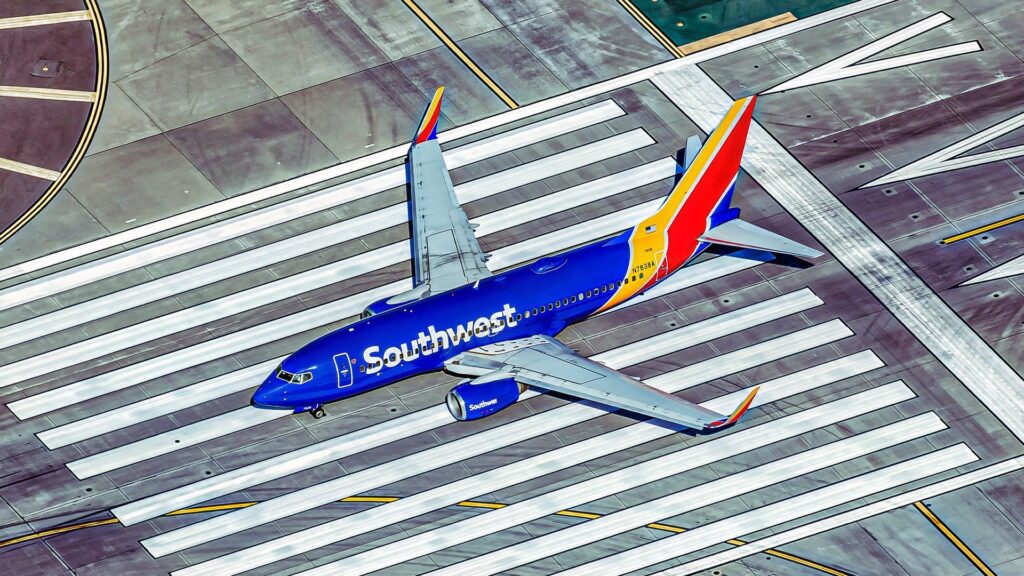
Southwest Airlines has unveiled its routes with the lowest passenger loads, revealing significant challenges in certain markets. According to the U.S. Department of Transportation (DOT), from September 2024 to August 2025, the airline filled just 77.8% of its available domestic seats, though this figure was bolstered by its strong domestic network. Notably, the airline also reported a higher load factor of 83% on international routes.
The analysis of Southwest’s performance indicates that some of the lowest load factors occurred on newly established routes, raising questions about their viability. For instance, the route from Colorado Springs to Cancun recorded an alarming 35.7% seat load factor, making it the worst performer. This route, which started operations in June 2025, only facilitated 918 passengers of the 2,574 available seats during its initial months.
Routes with Low Load Factors
The following routes were identified as having the lowest seat load factors, with the analysis focusing on routes carrying at least 900 passengers:
– Colorado Springs to Cancun: 35.7% (918 passengers)
– Long Island to Miami: 39.0% (28,970 passengers)
– Kahului to Lihue: 39.1% (49,787 passengers)
– West Palm Beach to Orlando: 41.6% (8,252 passengers)
– Honolulu to Kahului: 45.5% (559,506 passengers)
– Atlanta to Jackson: 48.5% (33,753 passengers)
– Sarasota to Orlando: 49.1% (8,523 passengers)
– Kahului to Kona: 49.8% (64,933 passengers)
– Honolulu to Kona: 50.3% (351,464 passengers)
– Oakland to Santa Barbara: 50.3% (55,626 passengers)
While some of these routes have recently begun service, their initial load factors raise concerns. For example, the Long Island to Miami route commenced in November 2024, and West Palm Beach to Orlando only started in August 2025, serving primarily for connectivity purposes.
Despite these low figures, Southwest’s overall performance in Hawaii showed a load factor of 89.4%, with the state accounting for 2.4% of the airline’s total traffic volume. However, intra-Hawaii operations struggled, with a mere 51.9% load factor, despite significant discounts aimed at competing with Hawaiian and Alaska Airlines. Over the past year, Southwest carried 1.8 million passengers within Hawaii, capturing approximately one in four travelers in the region.
Strategic Implications of Low Load Factors
The data raises important questions regarding the strategic importance of Southwest’s inter-Hawaii routes. While some segments remain heavily trafficked, others have exhibited poor performance, prompting speculation about potential cuts or adjustments. Notably, the airline’s overall intra-Hawaii load factor improved slightly from 47.0% to 51.9% over the past year, despite a reduction in capacity by 8%.
In addition to its Hawaii operations, Southwest’s international routes also faced challenges. Notably, the route to Havana reported the lowest overall load factor at 51.7%. This route, primarily connecting Tampa to the Cuban capital, carried 129,725 round-trip passengers before the airline ceased operations to Cuba in August 2025.
With Southwest operating flights to 117 airports, the performance of these routes will be closely monitored as the airline evaluates its network for potential adjustments. The low load factors on certain routes highlight the importance of market demand and the need for strategic planning in an evolving airline industry.






